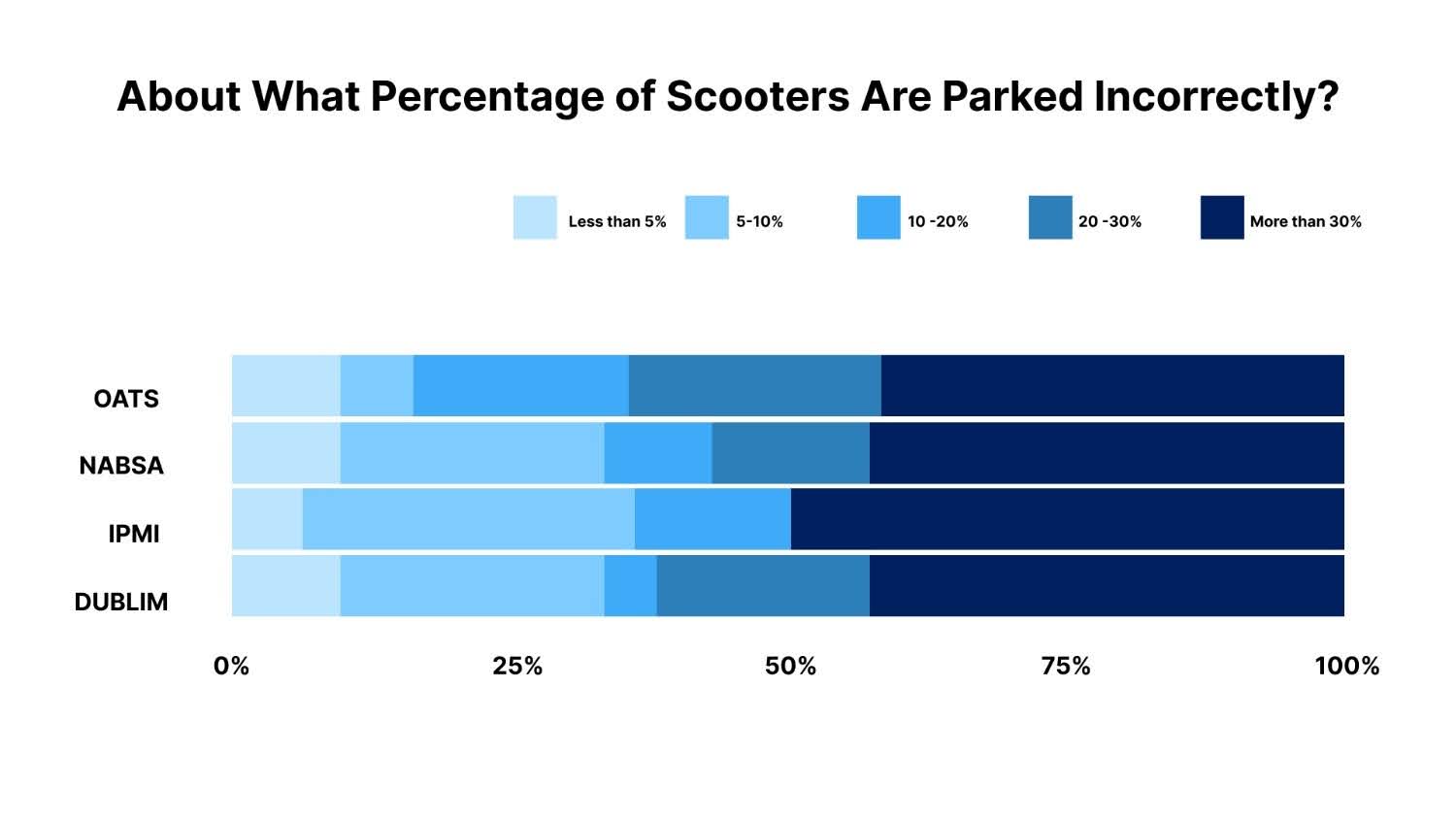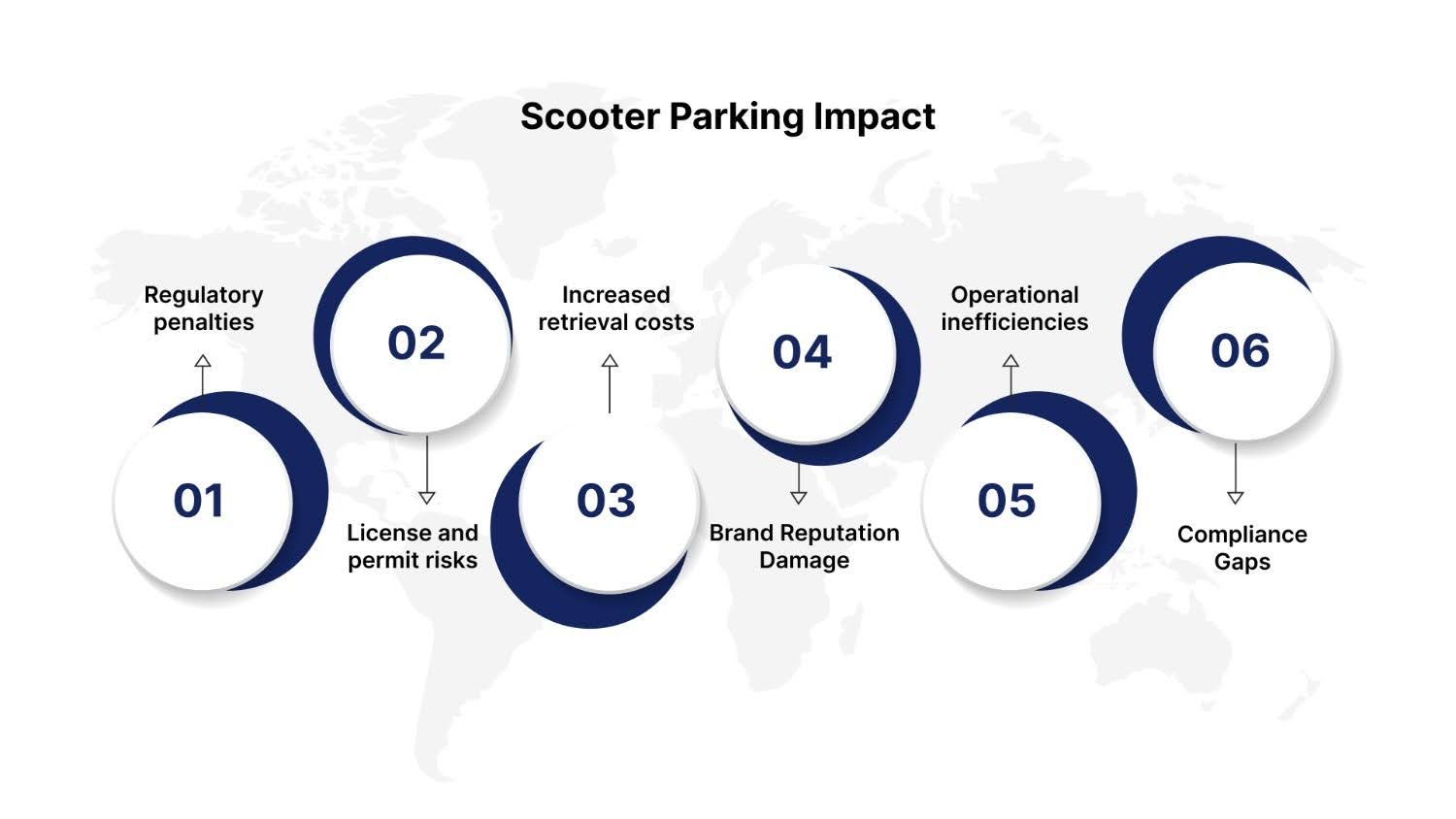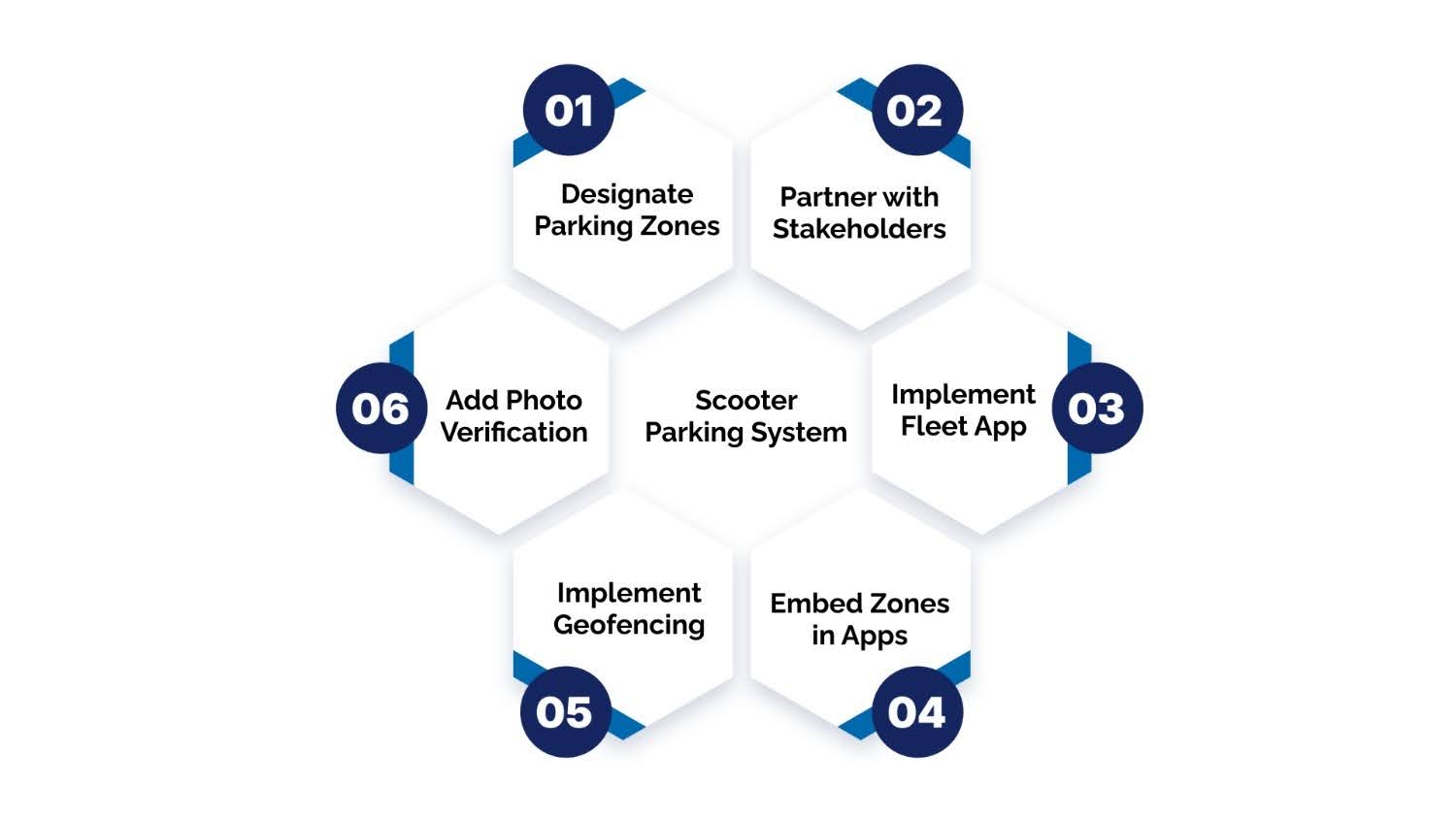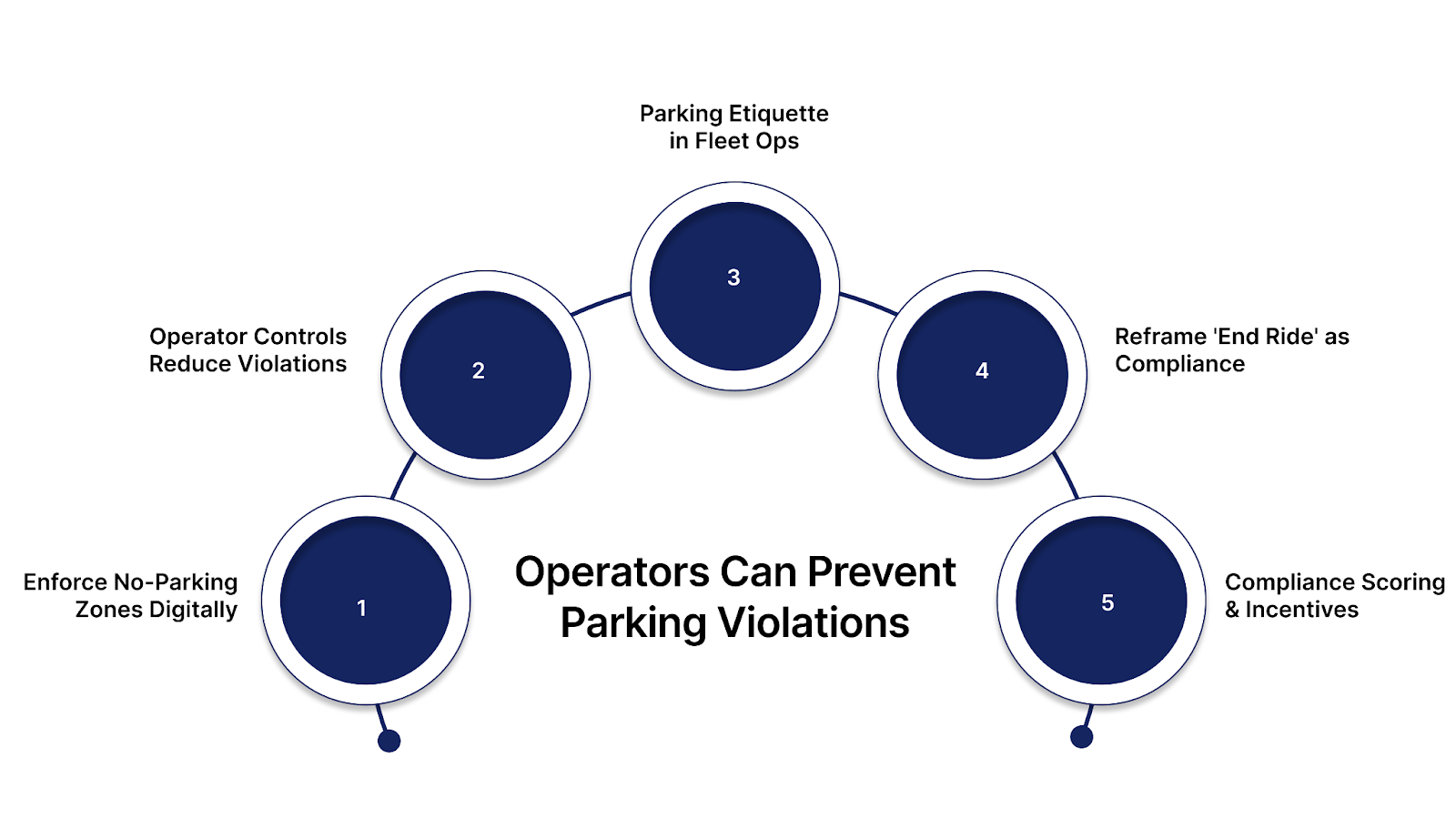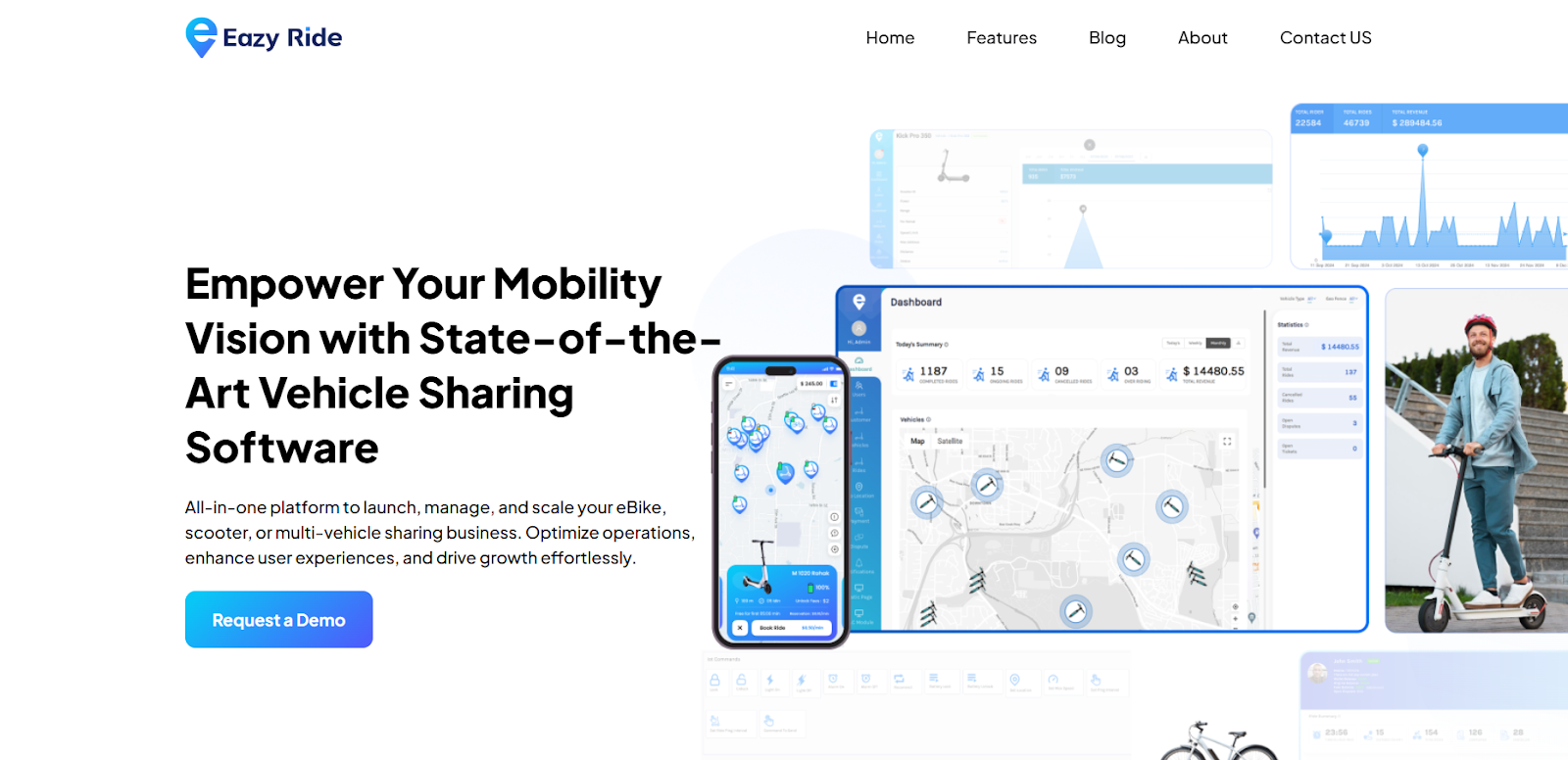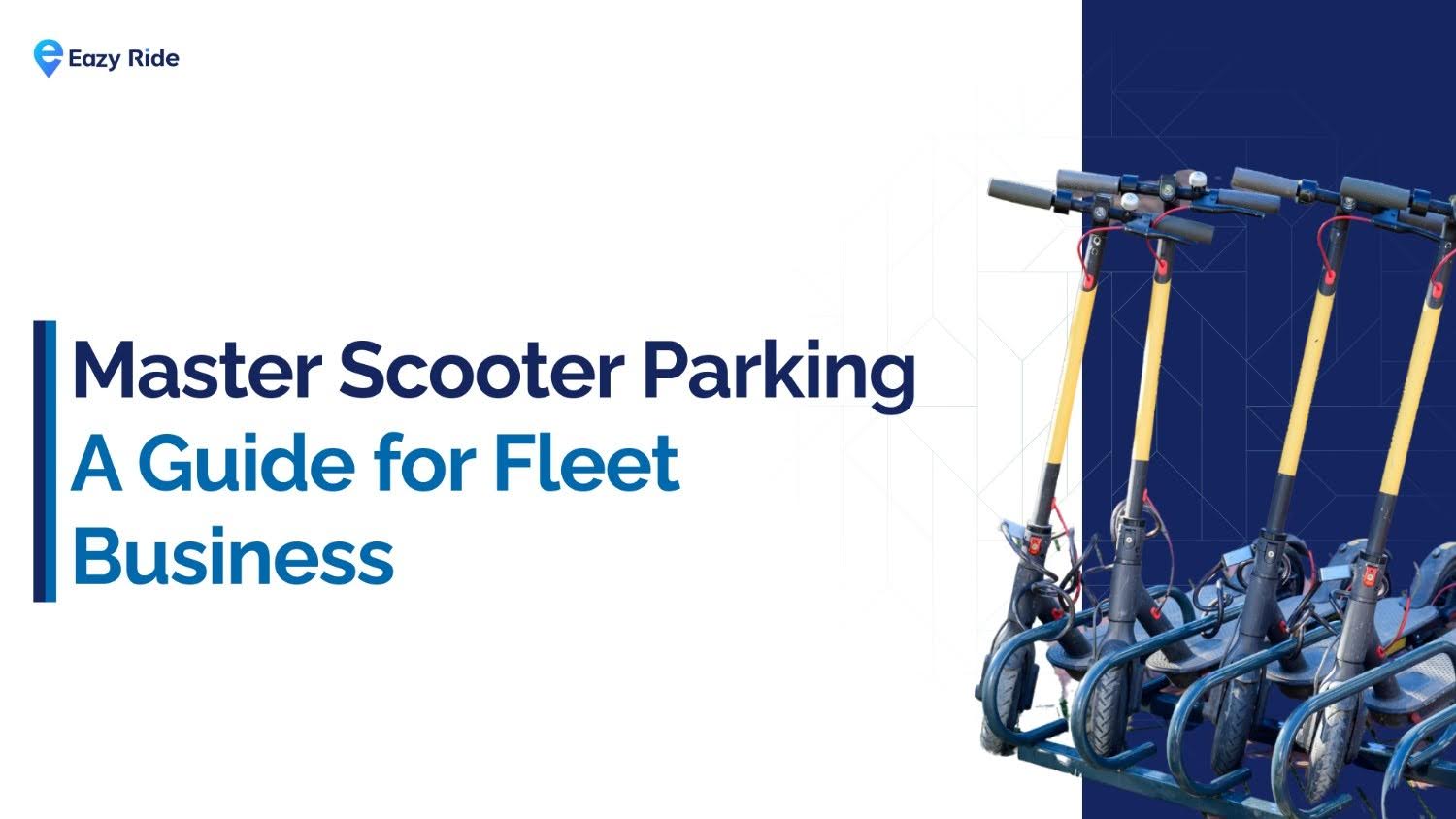 AllAnalytics and research
AllAnalytics and research
How to Master Scooter Parking: A Guide for Fleet Business
Tired of scooters ending up where they shouldn’t?
Are angry calls from city officials, resident complaints, and surprise fines draining your time (and budget)?
Improper scooter parking isn’t just a nuisance, but it also threatens your permits, public image, and bottom line. For fleet managers, one sloppy parking job can mean penalties, bad PR, or worse, a revoked license.
But here’s the good news: a San Francisco pilot program saw an 88.9% drop in violations just by guiding users to marked parking zones.
The takeaway? Without a smart parking strategy, you’re not scaling, you’re cleaning up.
This guide shares essential insights to help your business master scooter parking. You’ll learn how to reduce violations, improve operational efficiency, and maintain positive city partnerships.
How to Define Scooter Parking Zones for Your Business?
If zones aren’t clearly defined, your business will face fines, complaints, and extra costs. That’s why setting up compliant parking zones is your first step.
Smart placement of these zones matters. You want scooters close to transit stops, retail spots, and busy pedestrian areas. This helps riders find scooters easily but avoids blocking walkways or entrances. 40% of practitioners think that over 30% of scooters are parked incorrectly.
About What Percentage of Scooters Are Parked Incorrectly?
Integrating parking zones with city infrastructure makes your service part of the urban ecosystem. This reduces conflicts and supports long-term business growth.
The Business Impact of Scooter Parking Challenges
Poorly managed parking affects your operational efficiency, regulatory compliance, and overall profitability. Here are the key business impacts you face from scooter parking issues:
- Regulatory penalties: Cities enforce strict fines on scooters parked in unauthorized zones. These fines add up quickly and increase your operational costs.
- License and permit risks: Repeated violations may jeopardize your ability to operate. City officials can suspend or revoke permits based on parking compliance.
- Increased retrieval costs: Scooters left in the wrong places require manual retrieval, which drains workforce resources and reduces fleet availability.
- Damage to brand reputation: Public complaints about scooters blocking sidewalks or creating clutter can harm your company’s image. Negative sentiment affects partnerships and expansion plans.
- Operational inefficiencies: Lack of clear parking enforcement leads to uneven scooter distribution and rider frustration. It complicates fleet management and reduces utilization rates.
- Missed compliance insights: Without reliable data on parking patterns and violations, your team can’t identify hotspots or enforce policies effectively.
Addressing these issues requires a strategic approach backed by smart technology and clear operational protocols.
How to Build a Reliable Scooter Parking System?
Once you understand the business risks, it’s time to set up a parking framework that supports scale. You don’t just want scooters off the sidewalk; you want full visibility, compliance, and control.
You’ll need a system that works with riders, regulators, and your on-ground team. Start with these steps:
- Create Defined Parking Zones
Use local maps and GIS data to set boundaries near transit hubs, shopping areas, and high-traffic zones.
- Work with City Stakeholders
Collaborate to mark legal parking corrals, lock-to areas, and no-go zones.
- Use a Fleet Operator App for Ground Teams
Tools like Eazy Ride’s Fleet Operator App help staff manage on-site parking accuracy.
- Integrate Zones into Rider Apps
Riders should see where to park directly in their white-label rider app, not guess.
- Set Up Geofencing Controls
Use zone tech to lock scooters outside approved parking areas to avoid violations.
- Add Photo Verification for Ride Completion
Require riders to submit a photo before ending a trip; this builds habits and prevents bad parking.
Before you scale your scooter fleet, your parking system must go beyond access and visibility. Each permitted scooter should have at least three parking spots available, as active systems see scooters travel to several different locations daily. So, you also need enforcement and deterrence, because missteps don’t just frustrate cities, they cost money.
How Operators Can Prevent Parking Violations?
One wrongly parked unit can spark complaints, trigger fines, or even shut down your fleet’s access in dense zones. As you grow operations, you need more than rider trust. You need system-enforced rules that prevent violations at scale.
Critical No-Parking Areas to Enforce via System Controls
- ADA ramps and wheelchair access paths
- Fire hydrants and designated emergency zones
- Transit stops and city bus pick-up/drop-off points
- Private property, schools, or government buildings
- High-density sidewalks and pedestrian crosswalks
These spots often trigger public complaints, fines, and loss of fleet permits.
Operator-Led Controls to Minimize Violations
- Deploy AI tagging using tools like Eazy Ride’s analytics module to flag high-risk zones
- Run proactive alerts via the admin dashboard if violations exceed city caps
- Set auto-fines or cooldowns for repeated rule-breaking riders
Embedding Parking Etiquette into Fleet Operations
- Set upright parking rules and define a clear sidewalk margin (e.g., 3 feet from the curb)
- Build in compliance prompts before and after rides inside your app’s flow
Reframing ‘End Ride’ as a Compliance Event
- Delay ride end until both the GPS location and photo validation match approved zones
- Add on-screen corrections when photos show violations (like tilted or blocked scooters)
- Collect timestamped data to create audit logs for regulators and stakeholders.
Incentive Programs and Compliance Scoring
- Reward riders for consistent good parking via loyalty points or free ride credits
- Track rider behavior using in-app scoring linked to compliance
- Use behavioral segments to send custom messages: reminders, tutorials, or penalties
- Display compliance data on the Admin Dashboard for ongoing performance monitoring
How Eazy Ride Supports Effective Scooter Parking Management
Managing scooter parking at scale demands powerful tools that align operations, technology, and regulations. Eazy Ride provides a comprehensive platform designed to address these challenges and simplify fleet oversight.
- Geofencing & Zonal Control: With GPS-enabled geofencing, you can define precise parking zones, no-park areas, and speed limits. This will limit improper parking and enforce city rules automatically.
- Admin Dashboard: Monitor parking compliance with real-time heatmaps and zone breach alerts. Make informed decisions on fleet adjustments and rider education.
- Fleet Operator App: Equip field teams with mobile tools to track parking violations, capture photos, and swiftly perform on-site corrections.
- AI-Powered Analytics: Analyze parking patterns and rider behavior to predict hotspots and minimize future violations. Use insights to refine operations and improve service quality.
- Integrated Compliance Workflows: Link ride-end validation with photo capture and geo-checks to prevent ride completion without proper parking. This reduces manual enforcement costs.
Using Eazy Ride’s end-to-end mobility stack, operators reduce regulatory risks, improve rider experience, and scale efficiently with confidence.
Conclusion
Effective scooter parking impacts fleet reputation, operational costs, and regulatory standing. As cities tighten enforcement, your business must proactively adopt technology-driven solutions to stay compliant and competitive.
Implementing smart parking zones, using AI-powered compliance tools, and engaging riders through incentives can significantly reduce violations. Platforms like Eazy Ride offer a turnkey solution, combining geofencing, real-time analytics, and field management tools, all designed for scalable scooter parking management.
By prioritizing compliant scooter parking, you protect your investment and pave the way for long-term growth in the shared mobility market.
FAQs
1. Where can I find scooter parking near me?
Look for designated scooter parking zones marked by local municipalities. These are usually near transit hubs, commercial areas, or sidewalks with enough clearance. Many cities now offer maps or apps showing approved parking zones to help reduce violations.
2. What is electric scooter parking?
Electric scooter parking refers to safe, compliant zones where e-scooters can be parked without blocking footpaths, driveways, or entrances. These areas may include painted zones, scooter racks, or geofenced virtual parking spots enforced through mobile apps.
3. What are the standard scooter parking rules?
Parking rules vary by city, but common guidelines include:
- Don’t block sidewalks or ADA ramps
- Stay away from driveways and fire hydrants
- Park in marked or designated zones when available
- Use bike racks if permitted
Failure to comply may result in fines, impoundment, or service bans.
4. What are the typical scooter parking dimensions?
A single scooter typically needs a space of around 2 ft by 6 ft (0.6 m x 1.8 m). However, cities may require more room for shared fleets, such as 4 ft by 7 ft areas to safely accommodate multiple units and allow pedestrian clearance.


